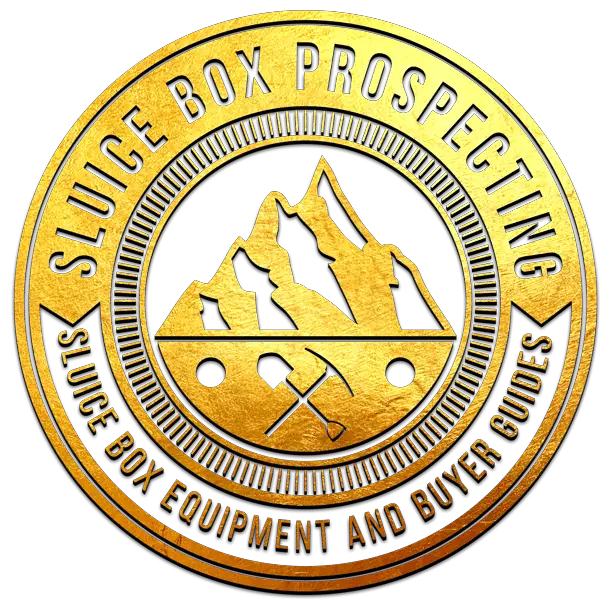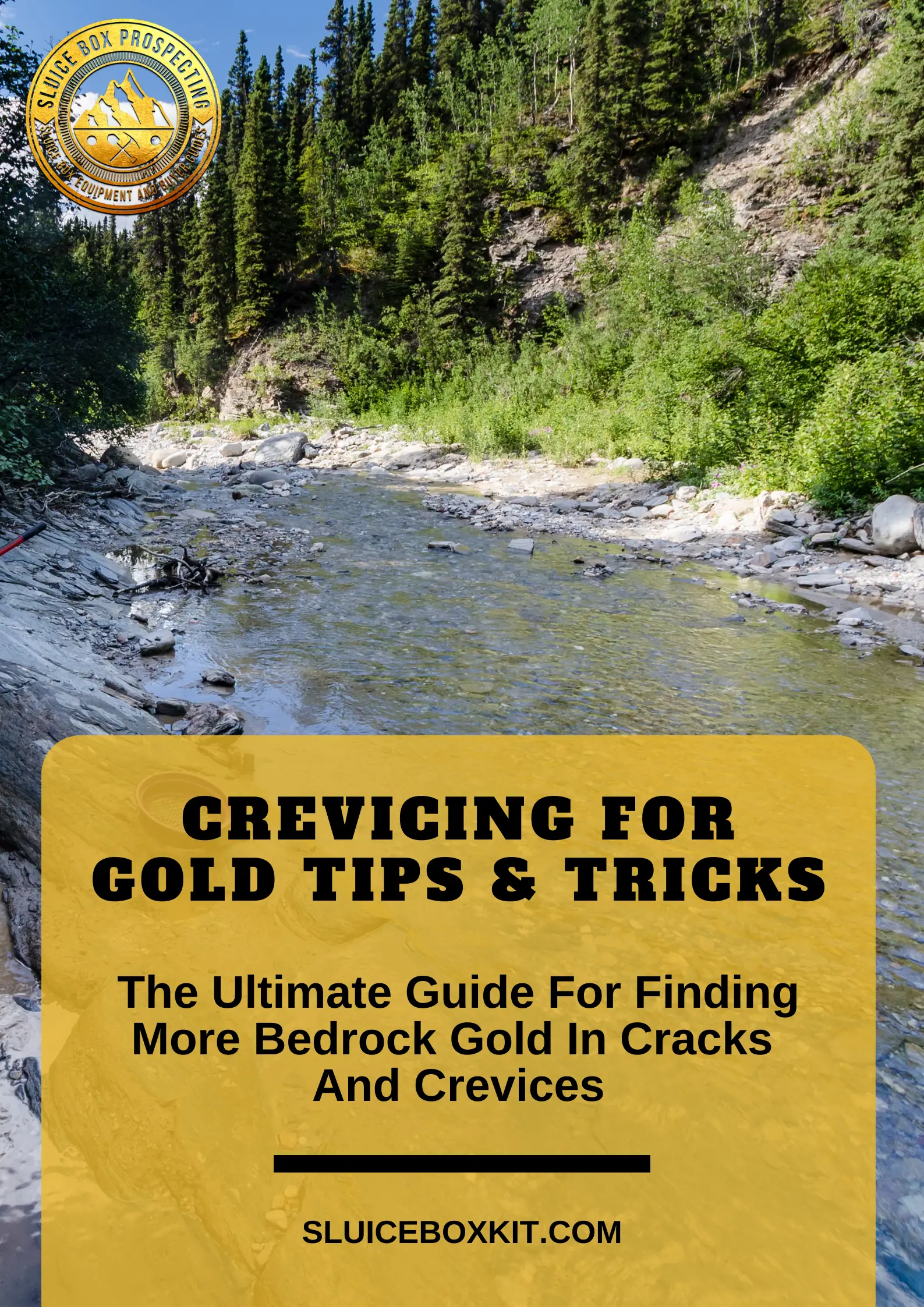Gold prospecting is a fun and exciting activity, and it can be profitable too! If you’re looking to find gold, crevicing in the narrow cracks of bedrock can hold tremendous potential.
This guide will teach you the techniques of crevicing for gold. You’ll also discover the tools and equipment you need and the best places to look. With this crevicing guide, you’ll be on your way to finding more gold than ever before!
What Does Crevicing Mean?
Table of Contents
Crevicing is a prospecting method that involves searching for gold in the cracks and crevices of bedrock. Gold can get into the bedrock in several ways. The gold can deposit there by moving water or glaciers.
Over time, gold catches in these areas and accumulates within the cracks exposed in the bedrock. Gold can settle inside the cracks quite deeply, so it’s best to have the right crevicing tools for the job and a keen eye for where to look.
Where Are The Best Places To Crevice For Gold?
Look for areas where there has been a lot of water activity. This area could be a riverbed, stream, or even a beach. Because gold is a heavy, precious metal, it often accumulates in low places. So, look for exposed bedrock in low spots of the river.
Look for the inside of a slow bend in the river. Also, pay attention to the size and color of the rocks. You want to identify heavy and polished boulders, indicating bedrock and gravel that contains fine gold deposits.
Notice where the water flows by identifying where the water flow pushes the gravel and rock. Next, look for spots where the flow can diminish due to obstruction and areas where gold can get stuck as the water flows.
Once you’ve found an area with potential, it’s time to start looking for crevices in the bedrock. Start by looking for narrow cracks and crevices that are a few inches wide or smaller. These are the most likely places for gold to be deposited. Ideally, you will locate a pinch point that allows the gold to become entrapped in the cracks and crevices.
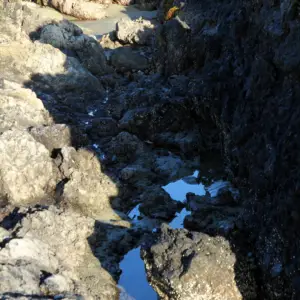
3 Tips For Finding The Best Places To Crevice For Gold:
- Have weathering cracks in them. The best ones are usually 1/2″ or wider.
- Some bedrock is crumbly, and gold works its way down and out of sight. These are excellent areas to metal detect.
- Some excellent bedrock areas are only covered by a foot or two of rocks and boulders and are virgin because no one likes to do the work.
Another good place to look is in the bedrock that glaciers have exposed. These glaciers can scrape up gold deposits and move them long distances. When the glacier melts, it leaves behind rubble called glacial till piles. This till often contains gold that is just waiting for you to find it!
What Crevicing Tools Do You Need To Make The Job Easier?
You’ll need a narrow, pointed tool to fit into bedrock’s narrow cracks and crevices. A small pick or even a screwdriver can work well as a crevice tool.
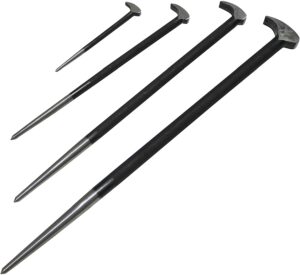
A good quality crevice tool is essential. You’ll also need a small brush to help loosen debris from the cracks. A flashlight will also help spot potential crevices and cracks in the bedrock.
It will also be helpful to bring a small shovel or trowel to help dig around in the dirt and gravel. Finally, a small pan will help you sift through the material you’ve collected to look for gold.
With the right crevicing tools and a little know-how, you’ll be on your way to finding gold in no time! Check out the post: The 11 Best Gold Crevicing Tools To Have When Gold Prospecting for a complete list.
If possible, it’s a good idea to bring a gold detecting metal detector with you to help you identify crevices with the most potential. Using quality gold detectors will help you discriminate undesirable metals so that you only spend time searching crevices containing gold.
The Process of Crevicing for Gold
Now that you know where to crevice for gold and what tools you need, it’s time to get started!
Once you’ve got your area scoped out, it’s time to start looking for crevices in the bedrock. Start by putting on your gloves and safety gear. You’ll also want to plan where you’re going to crevice.
The practice of crevicing for gold is to slowly and methodically explore the bedrock in a gold-bearing creek, taking the time to remove as much material as possible out of the cracks. When water levels are lowest in late summer, prospectors can wade a creek and work promising areas. – raregoldnuggets.com
Use your crevice tool to probe the cracks and loosen any debris obscuring your view as you look for crevices. Pay close attention to areas where two rocks come together or where there is an obstruction in water flow. These are often good places to find gold deposits.
Once you’ve found a potential crevice, it’s time to start crevicing! Use your crevice tool to loosen the dirt and gravel in the crack. You may need to use your brush to help loosen material that is stuck in the crevice.
You will also need to remove standing material on top of the bedrock to access the material within the bedrock that has the most potential.
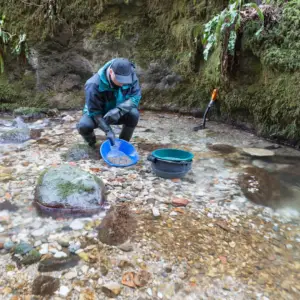
Once you’ve loosened the material, use your pan to sift through it and look for gold. If you don’t find any gold, don’t worry! Begin searching the uncovered crevice to see what gold-bearing material exists within it.
Remember to crevice slowly and carefully. It takes time and practice to get good at crevicing, but it’s well worth the effort when you find that first nugget of gold!
Collect the material you scrape and pull it from the crevices into a bucket or pan to process for gold. It’s also good to use a crevice pump (yabbie pump) to suck up loose or wet material that is difficult to gather with a chisel, prybar, or shovel.
Why Is Crevicing For Gold A Good Idea?
Crevicing is one of the most popular methods for finding gold deposits because you can do it with very minimal equipment and in various locations. Crevicing is a great way to find gold that is otherwise challenging to reach.
It’s also a relatively easy and inexpensive way to start prospecting. Plus, if you are in an area where prospecting is heavy, it’s possible that others have not taken the time to search the crevices and other more concealed areas of the bedrock.
8 Gold Crevicing Tips And Reminders
- Look for crevices in the bedrock with low spots and natural barriers
- Remove standing material on top of bedrock
- Sift through collected material with a pan for gold
- Use a crevice pump to suck up loose or wet material
- Probe cracks and loosen debris with specialized crevicing tools
- Use a brush to loosen material stuck in a crevice
- Take care not to miss any potential crevices by searching slowly and methodically
- Be sure to process all collected material for gold, even if you don’t find any right away
Crevicing is dislodging material from cracks and crevices in the bedrock to look for gold. The best place to crevice is usually where two rocks come together or where there is an obstruction in water flow. Gold crevicing can be done with minimal equipment, making it great for novice prospectors.
Crevicing for gold can be a very rewarding experience. It’s a great way to find gold deposits that are otherwise difficult to reach. It’s also a relatively easy and inexpensive way to start prospecting. Plus, if you are in an area where prospecting is heavy, it’s possible that others have not taken the time to search the crevices and other more concealed areas of the bedrock.
